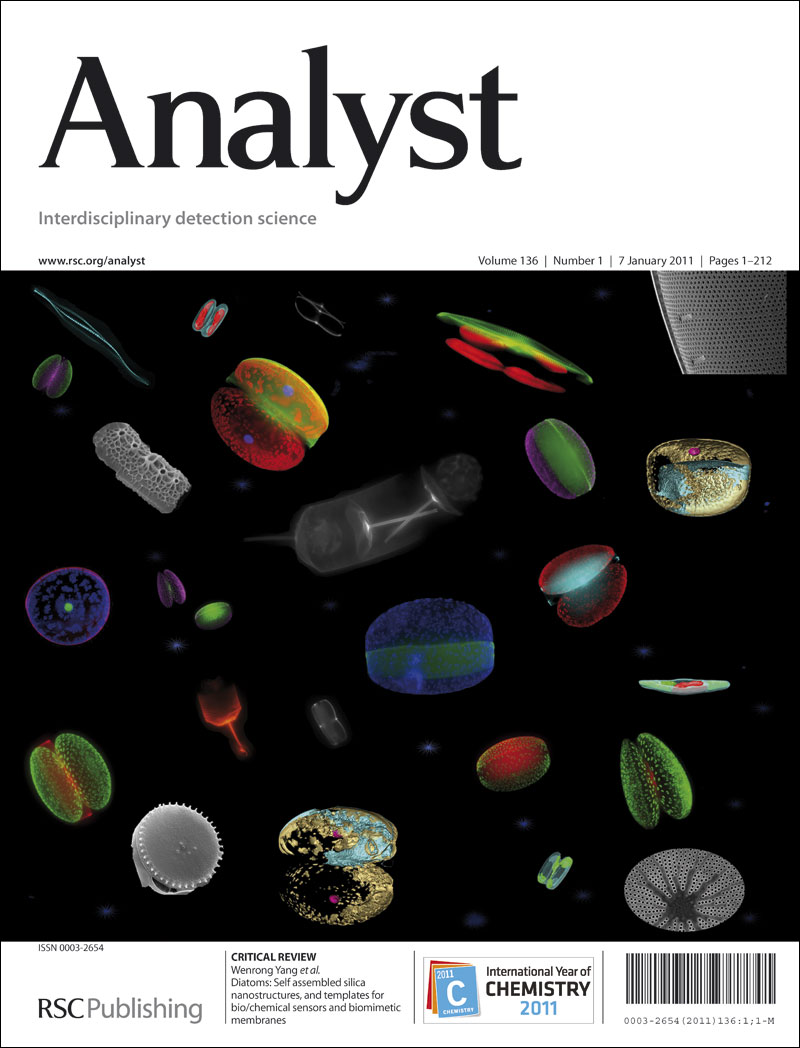使用中红外光谱无创测量心脏生物标志物的可行性:有限元分析和实验验证
IF 3.6
3区 化学
Q2 CHEMISTRY, ANALYTICAL
引用次数: 0
摘要
衰减全反射中红外光谱(ATR-MIR)提供了一种快速有效的方法来识别蛋白质特异性吸收光谱,使其成为一种有前途的无创检测心脏生物标志物的技术,这些生物标志物被认为是主要心血管事件的直接指标。然而,ATR-MIR在识别各种关键心脏生物标志物和消失波检测深度方面的有效性仍存在疑问。本文采用有限元模拟方法研究了衰减全反射(ATR)光路和倏逝波探测深度。为了模拟皮下组织环境,使用聚二甲基硅氧烷(PDMS)试剂池、高密度三聚氰胺海绵和聚对苯二甲酸乙酯(PET)薄膜来评估MIR光谱在不同深度检测心脏生物标志物的能力。结果表明,心肌肌钙蛋白I (cTnI)、n端前b型利钠肽(NT-proBNP)和c反应蛋白(CRP)的吸收光谱在酰胺I和酰胺II波段有明显的特征峰,具有高特异性。在深度约15 μm处,峰值振幅与生物标志物浓度有较强的相关性。即使在80 μm的深度,cTnI的吸收光谱仍然显示出显著的特征峰,证实了其检测皮下浅表心脏生物标志物的能力。这项研究强调了ATR-MIR光谱在无创检测皮下心脏生物标志物方面的巨大潜力,这可能有助于开发监测心血管健康的可穿戴设备,最终有助于心血管疾病的预防、诊断和治疗。本文章由计算机程序翻译,如有差异,请以英文原文为准。

Feasibility of non-invasive measurement of cardiac biomarkers using mid-infrared spectroscopy: finite element analysis and experimental validation
Attenuated total reflectance mid-infrared (ATR-MIR) spectroscopy provides a quick and efficient way to identify protein-specific absorption spectra, making it a promising technique for the non-invasive detection of cardiac biomarkers that are thought to be direct indicators of major cardiovascular events. However, there are still questions about the effectiveness of ATR-MIR in identifying various critical cardiac biomarkers and the detection depth of evanescent waves. This study employs finite element simulations to examine the optical path of attenuated total reflectance (ATR) and the detection depth of evanescent waves. To simulate a subcutaneous tissue environment, a polydimethylsiloxane (PDMS) reagent bath, a high-density melamine sponge, and a poly(ethylene terephthalate) (PET) film are used to assess the ability of MIR spectroscopy to detect cardiac biomarkers at different depths. The findings reveal that the absorption spectra of cardiac troponin I (cTnI), N-terminal pro-B-type natriuretic peptide (NT-proBNP), and C-reactive protein (CRP) show distinct characteristic peaks in the amide I and amide II bands with high specificity. At a depth of about 15 μm, the peak amplitude shows a strong correlation with the biomarker concentration. Even at a depth of 80 μm, the absorption spectrum of cTnI still displays significant characteristic peaks, confirming its ability to detect subcutaneous superficial cardiac biomarkers. This research underscores the considerable potential of ATR-MIR spectroscopy for the non-invasive detection of subcutaneous cardiac biomarkers, which could aid in the development of wearable devices for monitoring cardiovascular health, ultimately contributing to the prevention, diagnosis, and treatment of cardiovascular diseases.
求助全文
通过发布文献求助,成功后即可免费获取论文全文。
去求助
来源期刊

Analyst
化学-分析化学
CiteScore
7.80
自引率
4.80%
发文量
636
审稿时长
1.9 months
期刊介绍:
"Analyst" journal is the home of premier fundamental discoveries, inventions and applications in the analytical and bioanalytical sciences.
 求助内容:
求助内容: 应助结果提醒方式:
应助结果提醒方式:


